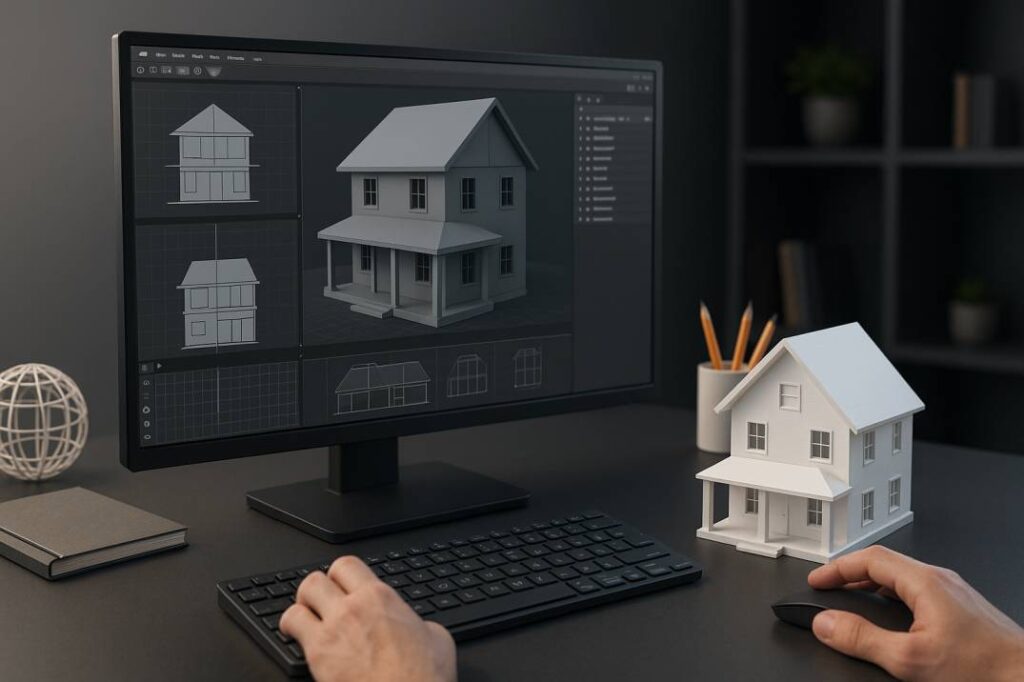In today’s fast-paced engineering and construction landscape, precision is more than an advantage; it’s a requirement. Whether you’re an architect in London, a structural engineer in New York, or a construction firm operating globally, the need for accurate, coordinated, and clash-free designs has never been greater. This is exactly where Structural 3D Modeling Services are making a significant impact.
From reducing rework and improving documentation to enabling seamless collaboration across disciplines, structural 3D modeling is reshaping how the built environment is planned, validated, and delivered. As businesses embrace digital transformation across the UK, USA, and worldwide, 3D modeling continues to shift from a “nice-to-have” to a core part of every successful project.
Why Is Structural 3D Modeling Becoming Essential in Modern Construction?
Construction projects are growing more complex. With tight timelines, sustainability pressures, and rising material costs, even small errors can snowball into costly setbacks.
According to McKinsey, construction rework accounts for up to 9% of total project costs, often due to design clashes and poor coordination.
Structural 3D modeling tackles these challenges head-on. By transforming 2D plans into detailed 3D structural models, teams gain a clearer, more realistic representation of how a building will behave and fit together long before the first piece of steel is cut or concrete is poured.
What Are Structural 3D Modeling Services?
Structural 3D modeling involves creating highly accurate, information-rich digital models of structural components such as:
- Beams
- Columns
- Foundations
- Bracing systems
- Structural steel connections
- Reinforcement layouts
- Slabs, walls, and load-bearing elements
With expertise from a 3D Modeling Company, the models offer precise geometry and engineering data, enabling better decision-making and risk reduction across the project lifecycle.
These models support multiple workflows including:
- Detailed engineering analysis
- Clash detection
- Quantity estimation
- Fabrication drawing generation
- Construction sequencing
- BIM coordination
How Do Structural 3D Modeling Services Improve Design Precision?
1. Eliminating Design Errors Early
Misinterpretations are common with traditional 2D drawings. Structural 3D modeling reduces ambiguity by visualizing how components interact in real space.
With advanced 3D Modeling and Design, engineers can:
- Identify load conflicts
- Prevent spatial misalignments
- Detect interference between structure, MEP, and architecture
- Validate geometry before detailing
This helps prevent mistakes that often surface during construction, saving both time and money.
2. Supporting Better Engineering Analysis
3D models provide engineers with reliable data for evaluating:
- Structural integrity
- Load distribution
- Deflection
- Vibration
- Material behavior
Instead of approximations, solid geometry offers real metrics, making analysis more accurate and actionable.
3. Enhancing Precision in Fabrication
Structural steel, precast components, and reinforcement all require millimeter-level accuracy. 3D modeling ensures fabrication teams receive precise, coordinated data.
Benefits include:
- Exact dimensions for CNC cutting
- Correct bolt holes and connection details
- Accurate rebar schedules
- Eliminated onsite modifications
This increases material efficiency and minimizes fabrication delays.
1. Creating a Single Source of Truth
Every stakeholder architects, engineers, MEP teams, and contractors can collaborate on a unified model. This reduces miscommunication and provides a centralized digital ecosystem for managing changes.
A shared model offers:
- Real-time visibility
- Better transparency
- Fewer coordination meetings
- Reduced design overlaps
This unified workflow is especially beneficial for large-scale or multi-team projects.
2. Enabling Clash Detection and Risk Mitigation
Clashes between structural elements and MEP components are a major cause of rework. With 3D modeling, clash detection becomes proactive rather than reactive.
Teams can identify conflicts involving:
- Ducts intersecting beams
- Pipes routing through structural walls
- Reinforcement collisions
- Incorrect slab openings
According to the World Economic Forum, early clash detection can reduce rework costs by up to 45%, a major advantage in both the UK and USA markets where labor and material costs continue to rise.
3. Improving Cross-Discipline Collaboration
Whether using BIM platforms or advanced CAD tools, 3D models streamline information exchange between:
- Structural engineers
- Architects
- MEP consultants
- General contractors
- Fabricators
This not only enhances project coordination but ensures that all stakeholders work with synchronized, up-to-date data.
What Trends Are Driving the Growth of Structural 3D Modeling?
1. The Shift Toward Digital Construction
The global digital construction market continues to expand, pushing structural engineering firms to adopt smarter, model-driven workflows.
This includes:
- Cloud-based modeling platforms
- Digital twins
- AI-assisted design automation
2. Increasing BIM Mandates
Countries like the UK already require BIM Level 2 for public sector projects, making 3D structural modeling a compliance requirement.
3. Rise of Offsite Construction
Prefabrication and modular construction demand exact digital models for manufacturing.
Structural 3D modeling is indispensable for:
- Precast detailing
- Modular building systems
- Steel fabrication
- Rebar modeling for offsite assembly
How Do Structural 3D Models Improve Project Efficiency?
Here’s how organizations benefit when partnering with a skilled 3D Modeling Company:
✔ Faster Design Cycles
Parametric modeling allows rapid updates, iterations, and revisions.
✔ Reduced Material Waste
Precise detailing ensures efficient cutting, ordering, and scheduling.
✔ Improved Constructability
Contractors receive detailed, buildable models that minimize onsite challenges.
✔ Enhanced Transparency
Digital models improve accountability and documentation across teams.
✔ Predictable Costing
3D models enable accurate BOQs, reducing budget overruns.
What Challenges Do Companies Face When Adopting 3D Structural Modeling?
Despite the benefits, a few challenges remain:
1. Training and Skill Gaps
Learning advanced tools like Revit, Tekla, or SolidWorks requires time and investment.
2. Software Integrations
Not all platforms integrate seamlessly, especially in hybrid project environments.
3. Data Management
Version control and model ownership can become issues without a clear workflow.
4. High Initial Setup Cost
Software, cloud storage, and hardware upgrades can be expensive, particularly for small firms.
5. Evolving Standards
Keeping pace with BIM requirements, digital frameworks, and industry standards can be challenging.
However, most companies overcome these challenges by outsourcing to experienced 3D Modeling Services providers.
How Can Businesses Get Started with Structural 3D Modeling?
Follow this simple roadmap:
- Define your modeling goals — accuracy, coordination, fabrication, BIM, etc.
- Choose a reliable partner — a skilled 3D Modeling Company with relevant industry experience.
- Start with a pilot project — evaluate workflow, quality, and output.
- Integrate with scheduling and costing — to fully realize benefits.
- Standardize modeling processes — templates, naming conventions, documentation.
- Scale across projects — once ROI is clear.
Why Structural 3D Modeling Is the Future of Smart Construction
As construction embraces digital transformation, structural 3D modeling stands out as one of the most impactful innovations. From eliminating errors to enhancing project coordination, it creates the foundation for a more efficient, predictable, and collaborative construction environment.
For businesses seeking greater precision and smoother project workflows, partnering with a professional 3D Modeling and Design firm is becoming not just advantageous, but essential.
If you’re looking to leverage these benefits, collaborating with a trusted USA-based CAD Modeling and Design company can help you accelerate innovation, improve project delivery, and ensure long-term success.



